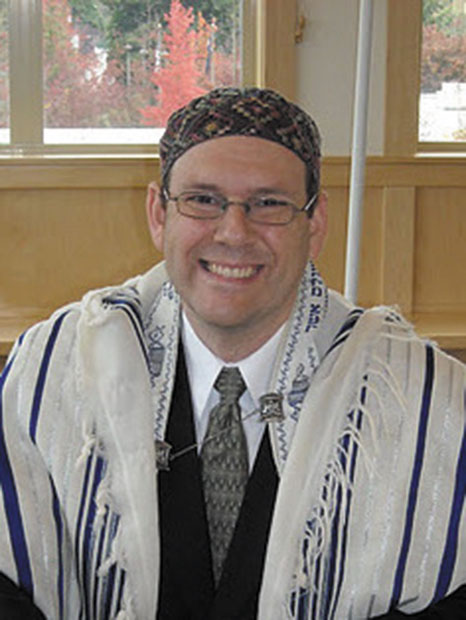Rabbi’s book takes a fresh look at the career of Moses
Published July 4, 2012
In his new book “Moses: A Stranger Among Us,” ($19, Cascade Books, 164 pages), Rabbi Maurice D. Harris, a native of St. Louis, sets forth a fresh look at Moses, “from a progressive, pluralistic Jewish perspective.”
Rabbi Harris himself is no stranger to his native St. Louis, having become a bar mitzvah at Congregation B’nai Amoona, growing up in Creve Coeur and graduating in 1987 from Parkway North High School. He is also a graduate of the Reconstructionist Rabbinical College, and now lives in Eugene, Ore.
In his engaging and thought-provoking book, Harris makes Moses accessible to modern Jews as opposed to the mythic images fueled by popular culture, including the one portrayed by Charlton Heston in “The Ten Commandments.”
Moses has been called by biblical skeptics the “greatest man who never lived,” since as noted by Harris and other Moses biographers, such as Jonathan Kirsch (“Moses: A Life”), there is no definitive archeological or extra-Biblical evidence that Moses, the central figure in the Jewish narrative even existed, or that the Exodus ever happened.
Harris does not attempt to sort out the various theories on just how much of the familiar Moses narrative is factually true, and how much is based on mythic stories from other cultures and religions. Instead, he reviews in depth the personality and decision-making of Moses as described in the Hebrew Bible, and finds ways of making his life and leadership roles relevant to Jews living in the 21st century.
In interpreting Moses’ career path, Harris goes against conventional wisdom that he was a lonely and singular figure.
“Rather than being the result of God working mainly through one man’s bold actions, the Exodus from Egypt and the transformation of the Hebrews from slaves to a free nation took place because of many individuals’ brave and creative resistance to an immense, oppressive power structure,” Harris asserts. “Moses alone could not have fulfilled God’s assignment to lead the Israelites from slavery in Egypt to the border of the Promised Land without what Harris calls, “the divinely inspired women and men—Israelites and non-Israelites—who made Moses’ leadership possible.”
Harris’s book is written for a general audience, even if the reader’s familiarity with the Moses story comes mainly from a hazily remembered past of Sunday school lessons and Heston’s film role.
While Harris makes it clear that his is “in many ways a Jewish book — the product of a rabbi interested in issues that directly face the contemporary Jewish community,” he expresses confidence that “readers of other religions or no religion can also find much of value in this book.”
Harris is especially keen in differentiating the traditional role of Moses as the “consummate insider of our traditions because of his close relationship with God and his role in communicating the divine commandments to the Israelites,” and aspects of Moses’ biography that prove that he lived “most of his life as an outsider to the Israelites.”
After all, Harris points out, while Moses had two Israelite parents and two Hebrew siblings, he was brought up in pharaoh’s court, he married a non-Israelite woman and despite leading the Israelites for 40 years to the very border of Canaan, never set foot in the sacred land of his people.
“Moses is in fact both an insider and an outsider—something that makes him surprisingly relevant to the many Jews and Christians today who find themselves simultaneously drawn to and uncomfortable with their faith traditions,” Harris writes.
After convincingly setting forth his case that Moses is the consummate outsider as well as the archetypal insider of the Jewish biblical narrative, Harris explores the role of the “supporting cast” of brave men and women without whom Moses would have been blocked at crucial phases of his career.
Harris takes note of the Egyptian women who refuse to heed pharaoh’s demands that he be put to death — and pharaoh’s daughter, who rescued the infant Moses from the Nile. Their crucial role is detailed in the biblical texts, and Harris expresses regret over “our own tendencies to highlight other aspects of Moses’ story and minimize the importance of these women.”
Harris’s engaging and fast-paced examination of the life of Moses provides both the casual reader and serious scholar with a compendium of insights into the career of our greatest Prophet.















